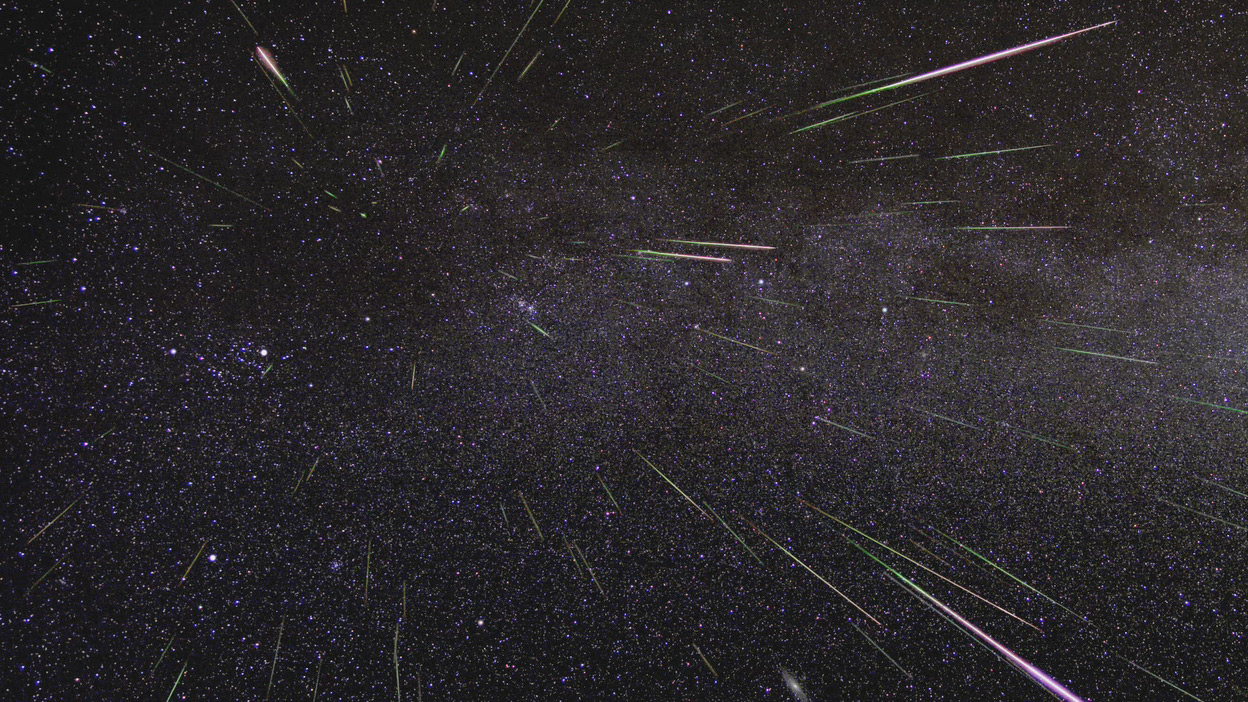The Perseids are back! Well… sort of.
Usually bringing one of the most vivid annual meteor showers visible in Earth’s night sky, commonly delivering 50-100 “shooting stars” per hour at its height, the Perseids will peak Aug. 12 and 13. There’s just one problem: the full Moon.

“Sadly, this year’s Perseids peak will see the worst possible circumstances for spotters,” said NASA astronomer Bill Cooke, who leads the Meteoroid Environment Office at NASA’s Marshall Space Flight Center in Huntsville, Alabama. “Most of us in North America would normally see 50 or 60 meteors per hour,” he said, “but this year, during the normal peak, the full Moon will reduce that to 10-20 per hour at best.”
The Moon is so much brighter than anything else in the night sky, and it will wash out all, but the very brightest Perseids as they streak through our atmosphere and burn up far overhead.
As the full Moon subsides, the Perseids will begin to wane Aug. 21-22 and cease completely by Sept. 1. They’re the debris remnants of Comet Swift-Tuttle, a lumbering “snowball” composed of ice, rock, and dust, which orbits our Sun every 133 years. The comet itself was last visible to us in 1992 and won’t pass our way again until 2125.
How far back sightings of the Perseids actually go remains a matter of some contention, Cooke said. The comet itself wasn’t identified until 1862, but the meteor shower was seen over medieval Europe. The annual event came to be known as “the Tears of St. Lawrence,” named for the last of seven Roman church deacons martyred by the emperor Valerian in August of the year 258.
So, this is probably not the best year to make a special trip in order to see the Perseids, but, if you find yourself outside between midnight and dawn on Aug. 13, don’t forget to look up anyway. Because you never know – you might just catch one of the bright Perseid meteors that defies the glare of the Moon. Also, the occasional early Perseid can streak across the sky as much as a week beforehand.
If you want to know what else is in the sky for August, check out the latest “What’s Up” video from Jet Propulsion Laboratory:
by Rick Smith

Thanks for the article.
I just saw the craziest thing I’ve ever seen in the sky. While sitting outside in my yard, talking to my mother, with the lights on, there’s a very brightly lit parking lot behind me, and 2 street lights in front. (Not at all an ideal situation for stargazing) A meteor caught my eye and appeared to be getting bigger. It looked like a ball of fire as it traveled all the way across my line of sight, then right before it went out of view, it split into 2. It looked like 2 fireballs moving so quickly and with tails!! I was just saying “whoa!”, and pointing. It took my mom several seconds to even register to look up to what I was pointing at. When she did, we BOTH saw the meteor.